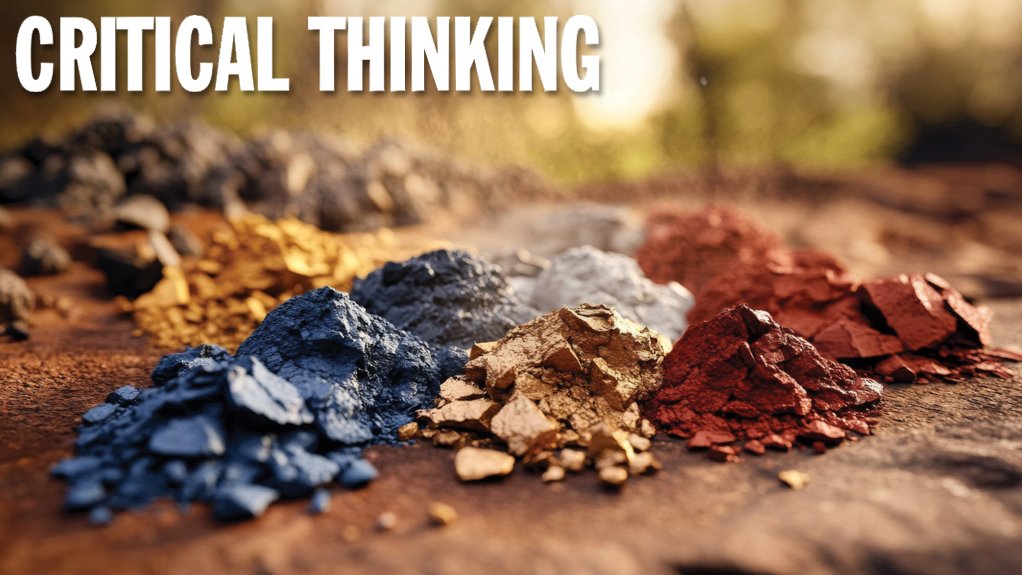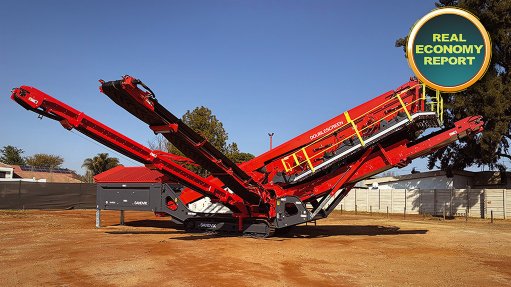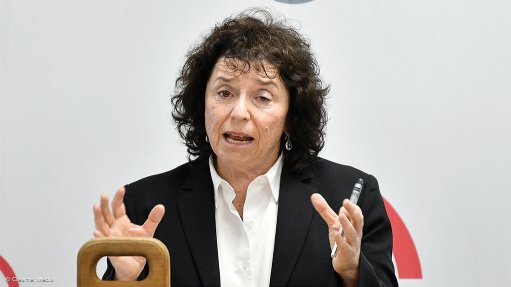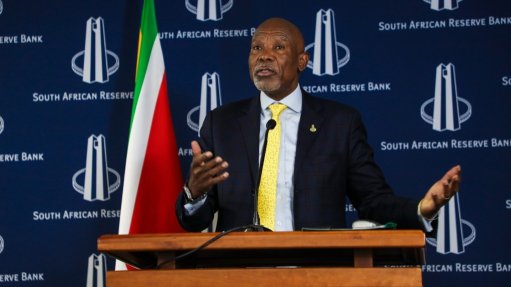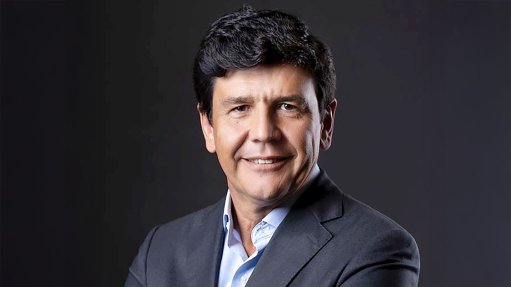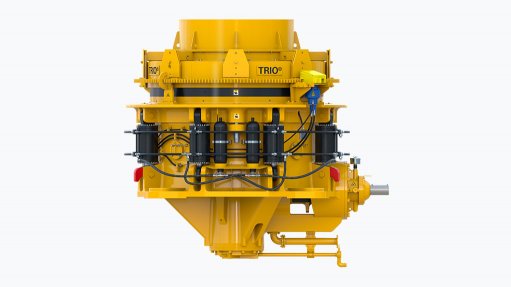Critical minerals miners urged to integrate circularity, communities from start
Circularity and community engagement have emerged as key factors for critical minerals mining as more countries and companies turn their focus to the “new” minerals required for green energy and decarbonisation technologies globally.
African countries, in particular, need to take this into consideration to garner investment for their rich endowment of these minerals. Projections by American think-tank the Centre for Strategic and International Studies indicate that more than 300 new mines extracting lithium, cobalt, copper and other critical minerals will be needed by 2030 to prevent a supply shortage and meet demand for electric vehicle (EV) and energy storage batteries.
Independent think-tank the Mapungubwe Institute for Strategic Reflection (Mistra) anticipates that mineral demand for clean energy technologies will quadruple by 2040 to meet climate commitments.
During its yearly platinum group metals (PGM) roundtable in November, Mistra cited a World Bank report, published in 2020, which highlights that the world will need a 500% increase in lithium and cobalt supply by 2050 to meet green energy transition goals.
In a webinar hosted by Creamer Media, Church of England Pensions Board chief responsible investment officer Adam Matthews discussed whether the race to secure a supply of critical minerals was resulting in the mining industry’s compromising on environmental, social and governance (ESG) principles. He confirmed that institutional investors were increasingly focused on learning how mining companies could improve on legacy mining practices.
“A lot of capital and investment will be coming from organisations that have expectations around ESG performance. They will be guiding the way in which mineral-rich countries can seek to develop those minerals in a way that is equitable and beneficial to all parties,” Matthews added.
He highlighted the finance sector’s responsibility to deliver growth in this vital sector and ensure that mines implement best-practice standards.
Matthews also emphasised the importance of coordination and partnerships to unlock the necessary minerals for the future, including investments in geology and in creating regulatory stability where operations are located.
The Church of England Pensions Fund is leading the Mining 2030 Global Investors Commission to consider not only how it can invest differently in the mining sector but also practical ways of unlocking opportunities over the next 12 months.
Community Involvement
Hyve Group’s Investing in African Mining Indaba content and strategic partnerships head Laura Nicholson said during the webinar that communities had become increasingly vital stakeholders in the mining industry, which now requires greater connectivity across the value chain than ever before.
MTN Business information and communication technology solutions GM Sudipto Moitra noted that, from a technology perspective, mining companies had the opportunity to implement modern connectivity in communities – not only on mines.
He believes that better value chain integration lies in connecting stakeholders through private networks, which could, in turn, benefit public networks. Community engagement has become more efficient, faster and inclusive using technology, which is also stimulating more economic development and business opportunities.
Moitra regards the inclusion of community members – of all genders and ages – as pivotal: “We will not have a lot of success if a mine is digitally advanced and connected but the whole ecosystem and community are lagging behind.”
Moreover, Minerals Council South Africa CEO Mzila Mthenjane cited the example of the Royal Bafokeng nation, a major shareholder in Royal Bafokeng Platinum, whose partnership with the surrounding community has culminated in better access to endowments and mutual commercial benefits.
A mindset shift is required regarding asset-owning communities – they must play a more significant role in mineral extraction and value addition, instead of mining companies merely creating trusts for these stakeholders.
Mthenjane cited the example of casinos in America that have similar structures with First Nations: “Communities are becoming increasingly commercial and engaging with investors on equal terms.”
Matthews added that investors often look to local experts, who hail from communities, to gain insight into the operating environment of African countries, the socioeconomic requirements and unlocking mineral wealth.
Council for Geoscience CEO Mosa Mabuza agreed that it was only through meaningful and mutually beneficial partnerships with various stakeholders that the continent could realise its true potential in the critical minerals space.
Circularity in Motion
Mabuza said the opportunity for responsible tailings storage and retreatment could not be overstated, as the technology employed by mining companies previously was less efficient in minerals extraction than current technologies, owing to advances in recovering and reclaiming minerals from legacy mines, Mabuza said.
For example, rare-earth elements in great concentrations in coal discards – ordinarily an environmental nuisance and risk – now serve as a source of reclamation to recover more minerals and enhance the environment.
Mthenjane agreed, pointing out that the concept of circularity in mining provided “massive opportunities” to continue to extract value from tailings, for not only existing mines but also the design of new ones.
He believes that what is considered to be waste in one industry is a source of value in another, and, with more links and integrated ESG efforts from a mining perspective, the industry can contribute more meaningfully to the overall development of a region or country.
Matthews stated that investors had more confidence to invest in companies implementing tailings management best practice and circularity. He regards this as one way in which the mining industry can work with governments, international bodies and investors to implement responsible tailings management practices.
Another important factor for the mining industry and investors to consider as more critical minerals are mined is traceability, which Mthenjane highlighted by citing the diamond mining industry and its Kimberley Process.
“From a responsible mining perspective, investors are increasingly considering the carbon content of manufactured products, including the sources of minerals.”
European legislation, in particular, would increasingly influence mining carbon efficiency and overall responsible inputs for critical minerals extraction, he added.
Local Excellence
With African countries hosting vast amounts of the critical minerals required globally – including South Africa, with 92% of the world’s PGM reserves for green hydrogen, and the Democratic Republic of Congo (DRC), with 56% of the world’s cobalt for EVs – Mistra believes the continent is poised to play a major role in green energy development globally.
The institute cited more examples, such as 54% of the world’s manganese being found in Gabon, South Africa, Ghana and Côte d’Ivoire; 36% of the world’s chromium resources being located in South Africa; and Guinea hosting 24% of the world’s bauxite.
Other critical minerals, such as lithium, rare-earth elements, graphite and nickel, are found in countries such as Angola, Tanzania, Madagascar, Malawi, Namibia and Zambia.
However, most of these minerals are being exported as raw materials, which limits the exporting countries’ ability to contribute to the expansion and diversification of economies. Mistra said several countries – including the DRC, Namibia and Zimbabwe – were introducing export bans on raw ores to push for more in-country mineral processing.
The dependence of most African countries on the export of minerals also makes them vulnerable to external shocks such as political disruption and economic downturns.
Some projects on the continent have sought to create local manufacturing of EVs and batteries, particularly in the DRC and Zambia, but these projects have been slow to take off.
Mistra said the financial support required to get the value chain “off the ground” was rarely available, owing to underdeveloped capital markets in most African countries, with South Africa being one of few countries on the continent with advanced private capital markets.
The institute added that inadequate regional mineral and industrialisation policies in the Southern African Development Community region exacerbated already slow regional collaboration.
In that respect, Mistra believes the evolving vehicle manufacturing supply chain has necessitated the incorporation of new thinking into critical mineral strategies. However, only equitable, integrated regional value chains can assist the region in implementing developmental policies.
During the Mistra roundtable, Southern African Resource Watch’s Advocate Davie Malungisa expressed concern that Zambia was the only African country which had launched a critical minerals strategy, despite the continent’s being a global hub for many critical minerals.
Developed countries, such as Canada, Australia, the US, Japan and some EU countries, have developed lists of minerals required for their economic and energy development.
A key challenge for Africa is that many countries do not know the extent of their mineral endowments, owing to a lack of investment in geology and exploration.
Artisanal miners often find lithium first, but are excluded from participating in the official discovery of resources, Malungisa added.
Ultimately, the experts agreed during the webinar that Africa’s own energy transition and value extraction from critical minerals were threatened by the current lack of exploration investment, incoherent regional policies and the continued export of raw minerals.
All the speakers advocated for more government involvement, targeted industrial policy and investment, regional cooperation and leveraging of the African Continental Free Trade Area to create more integrated value chains and development in the mining sector.
Comments
Press Office
Announcements
What's On
Subscribe to improve your user experience...
Option 1 (equivalent of R125 a month):
Receive a weekly copy of Creamer Media's Engineering News & Mining Weekly magazine
(print copy for those in South Africa and e-magazine for those outside of South Africa)
Receive daily email newsletters
Access to full search results
Access archive of magazine back copies
Access to Projects in Progress
Access to ONE Research Report of your choice in PDF format
Option 2 (equivalent of R375 a month):
All benefits from Option 1
PLUS
Access to Creamer Media's Research Channel Africa for ALL Research Reports, in PDF format, on various industrial and mining sectors
including Electricity; Water; Energy Transition; Hydrogen; Roads, Rail and Ports; Coal; Gold; Platinum; Battery Metals; etc.
Already a subscriber?
Forgotten your password?
Receive weekly copy of Creamer Media's Engineering News & Mining Weekly magazine (print copy for those in South Africa and e-magazine for those outside of South Africa)
➕
Recieve daily email newsletters
➕
Access to full search results
➕
Access archive of magazine back copies
➕
Access to Projects in Progress
➕
Access to ONE Research Report of your choice in PDF format
RESEARCH CHANNEL AFRICA
R4500 (equivalent of R375 a month)
SUBSCRIBEAll benefits from Option 1
➕
Access to Creamer Media's Research Channel Africa for ALL Research Reports on various industrial and mining sectors, in PDF format, including on:
Electricity
➕
Water
➕
Energy Transition
➕
Hydrogen
➕
Roads, Rail and Ports
➕
Coal
➕
Gold
➕
Platinum
➕
Battery Metals
➕
etc.
Receive all benefits from Option 1 or Option 2 delivered to numerous people at your company
➕
Multiple User names and Passwords for simultaneous log-ins
➕
Intranet integration access to all in your organisation



